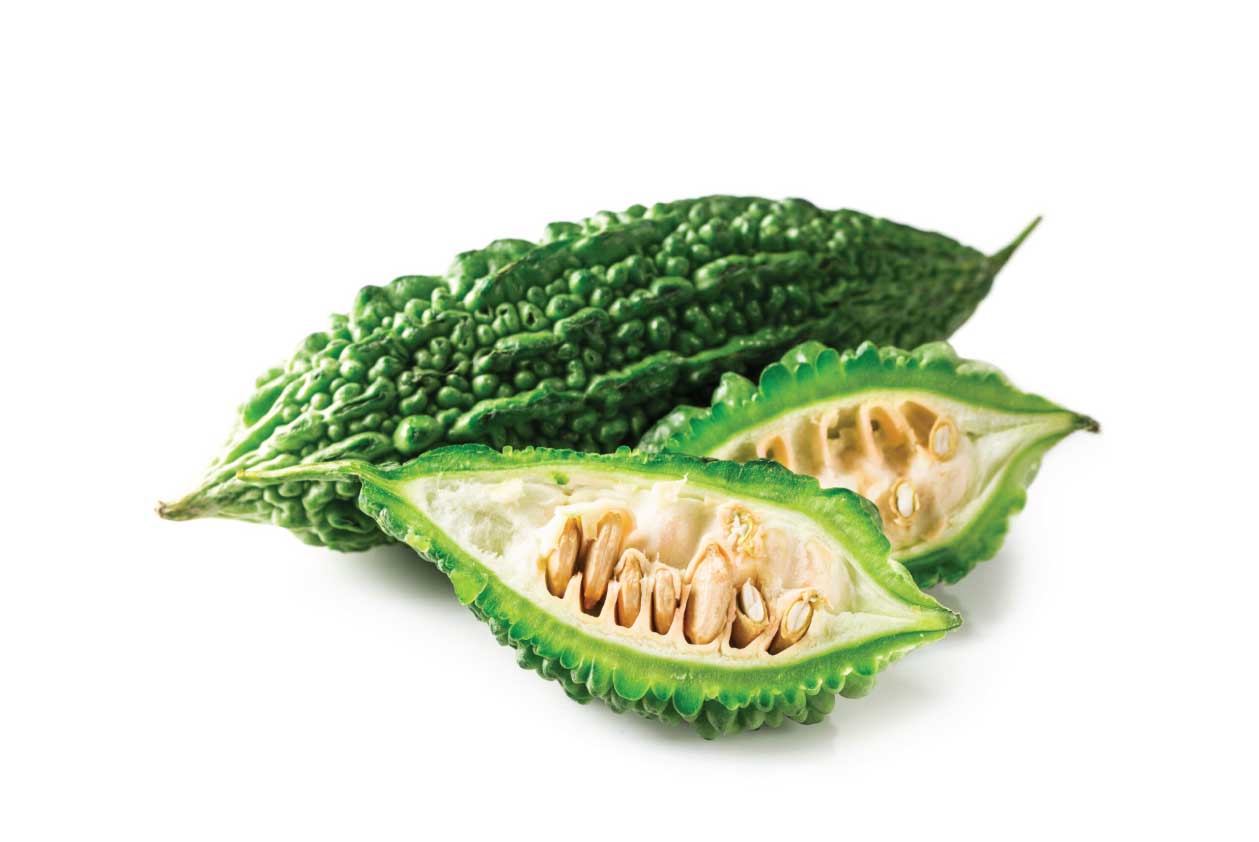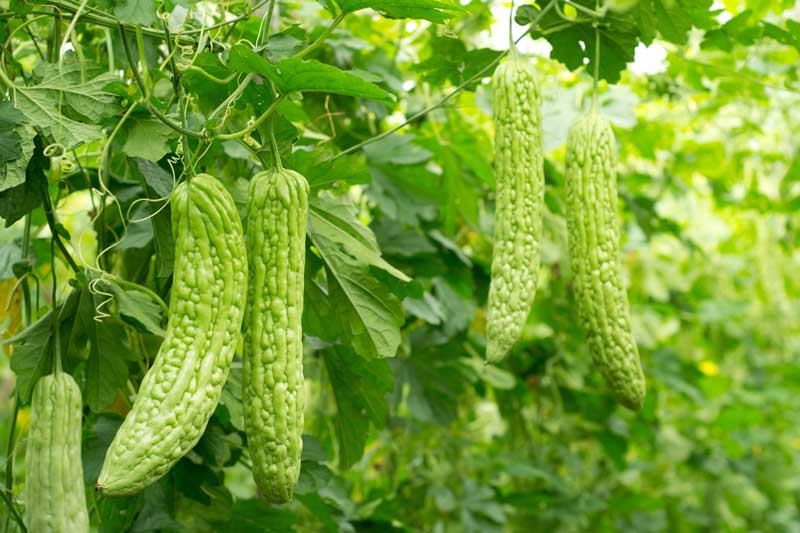
Bitter melon is a climbing tropical vine known for its spiky green fruits and strong medicinal properties. Popular across South and East Asia, it’s a staple in stir-fries, teas, and traditional herbal remedies. In warm parts of Australia, bitter melon is easy to grow at home with a sunny spot and sturdy trellis.
What Is Bitter Melon?
Botanical Name: Momordica charantia
Also Known As: karela (Hindi), goya (Japanese), pare (Indonesian), ampalaya (Filipino), bitter gourd
Bitter melon is part of the cucurbit family, with lobed leaves, curling tendrils, and bright yellow flowers. Fruits have a warty surface and tapering shape, ranging from 15 to 30 cm long. Their bitter taste is prized in many cuisines and herbal traditions.
Quick Growing Info
| Category | Details |
|---|---|
| Plant Type | Annual vine |
| Botanical Name | Momordica charantia |
| Climate Zones | Tropical, Subtropical, Warm Temperate |
| Sowing Season | Sept–Jan (Temperate/Subtropical), Dry Season (Tropics) |
| Days to Harvest | 60–75 days |
| Spacing | 60–90 cm between plants |
| Sunlight | Full sun |
| Soil pH | 6.0–6.8, rich and well-drained |
| Support Needed | Yes – trellis or arch |
How to Grow Bitter Melon from Seed
Soak seeds overnight to speed up germination. Sow 2–3 cm deep in warm soil (above 20°C). In cooler areas, start indoors and transplant after frost.
Bitter melon needs a tall, strong trellis. Vines can grow 2–3 m long and need space and airflow. Water regularly, especially during flowering. Use mulch to keep roots cool and moist.
Pollination
Flowers are male or female. Bees and hoverflies help pollinate, but hand-pollination improves yields. Use a soft brush to transfer pollen in the early morning.
Common Problems and Fixes
| Problem | Cause | Fix |
|---|---|---|
| Poor fruit set | Low pollination | Hand-pollinate or attract bees with flowers |
| Fruit fly damage | Eggs laid in young fruit | Use exclusion bags or traps |
| Yellowing leaves | Nutrient deficiency or overwatering | Feed with seaweed solution, improve drainage |

When and How to Harvest
Harvest when fruits are firm, green, and around 15–25 cm long. Overripe bitter melons become yellow, spongy, and very bitter. Pick every few days to encourage new growth.
Use sharp scissors or secateurs and leave a short stem. Wash and store in the fridge for up to 5 days.
Use sharp scissors or secateurs and leave a short stem. Wash and store in the fridge for up to 5 days.
How to Use Bitter Melon in Cooking
Bitter melon’s taste is intense, but delicious when balanced with bold flavours. Peel is usually left intact. Try:
- Stir-Fried Bitter Melon: Sliced thin and sautéed with garlic, soy sauce, egg, and chilli (Filipino style)
- Bitter Melon with Black Bean Sauce: Steamed or stir-fried and tossed in a savoury fermented sauce (Chinese style)
- Bitter Melon Tea: Dried slices steeped in hot water for a herbal infusion
Medicinal and Nutritional Benefits
Bitter melon is rich in antioxidants and has long been used in Ayurvedic and Chinese medicine. It’s studied for its potential to:
- Lower blood sugar
- Support liver function
- Aid digestion
Note: Consult your doctor before using bitter melon medicinally, especially if taking insulin or blood sugar medication.
